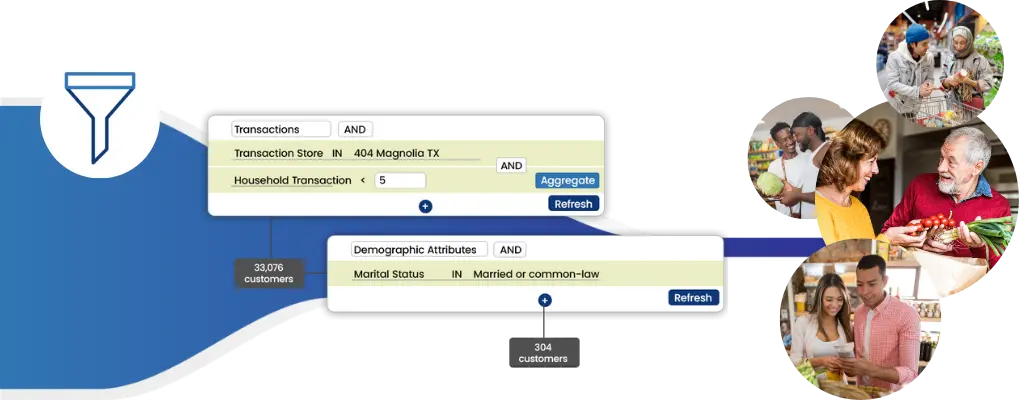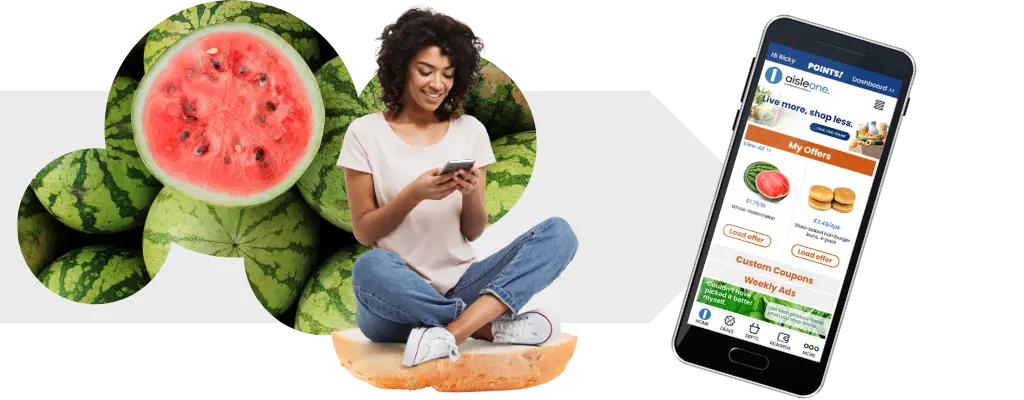Introduction
Grocery loyalty programs have become an important strategy for supermarkets and grocery stores aiming to improve customer retention. These programs go beyond rewarding frequent shoppers; they are about recognizing customer needs and making their shopping journey more engaging. By prioritizing value and satisfaction, grocery businesses can cultivate a loyal customer base that supports steady revenue growth.
Integrating data analytics into grocery loyalty programs represents a significant opportunity to further customize the shopping experience. By analyzing shopping behaviors and preferences, grocers can adapt their offerings and communication, ensuring each customer feels seen and valued. This tailored approach not only enhances customer satisfaction but also refines marketing strategies, making promotions and rewards more relevant and appealing, thus increasing engagement and loyalty.
Key Features of Successful Grocery Loyalty Programs
Successful grocery loyalty programs stand out by incorporating a mix of strategic features designed to enhance customer engagement and retention. Understanding these components is essential for grocery businesses looking to develop or refine their loyalty initiatives.

Personalization at the Core
- Personalized Offers: Tailoring deals and rewards based on individual customer preferences and purchase history ensures that promotions resonate with the shopper, increasing the likelihood of redemption and repeat purchases.
- Behavioral Targeting: Utilizing customer data to segment and target customers with specific offers that match their shopping habits and preferences enhance the relevance of the loyalty program.
Robust Rewards System
- Points System: A straightforward and transparent system where customers earn points for purchases, which can be redeemed for discounts, products, or other perks, encourages ongoing engagement with the store.
- Tiered Rewards: Implementing levels within the loyalty program where customers unlock progressively better rewards as they reach higher tiers motivates customers to increase their spending and engagement to attain higher-level benefits.
Digital Integration for Enhanced Accessibility
- Digital Integration: Seamlessly integrating the loyalty program across all digital platforms, including the store’s website, social media, and email marketing campaigns. This ensures a cohesive and consistent message across all customer touchpoints.
- Mobile App: Developing a user-friendly mobile app that allows customers to easily access their loyalty account, track points, redeem offers, and receive personalized notifications. The app should offer:
- Easy Enrollment: Simplify the membership enrollment process with a few taps.
- Real-Time Updates: Instant access to points balance and available rewards.
- Personalized Alerts: Notifications for new deals, reward tier upgrades, and exclusive events.
Seamless Customer Experience
Ensuring a seamless experience for program members is crucial. This includes:
- Omni-channel Loyalty: Allowing customers to earn and redeem rewards across various channels, whether in-store, online, or through the app, providing a unified shopping experience.
- Customer Support: Dedicated support for loyalty program members to resolve issues, answer questions, and assist with reward redemption, enhancing the overall customer experience.
By focusing on these key features, grocery businesses can create a loyalty program that not only attracts customers but also retains them through personalized engagement, rewarding systems, and seamless digital experiences.
Personalizing Your Grocery Loyalty Program for Maximum Engagement
Personalizing your grocery loyalty program is pivotal for building deep customer connections and driving engagement. The key to unlocking this personalization lies in acquiring data that allows grocers to understand your customers' unique behaviors and preferences, allowing you to tailor every aspect of the loyalty experience to their individual needs. Implementing strategies that provide detailed insights can turn a standard loyalty program into a dynamic tool that boosts customer satisfaction, encourages frequent visits, and increases overall spending.
Data Analytics for Customer Insights
Data analytics, an integral part of grocery loyalty programs, plays a critical role in decoding customer behavior and preferences. By collecting and analyzing data from various touchpoints, grocers can gain a comprehensive view of their customer base, enabling them to craft personalized offers and experiences that resonate deeply with each segment.
- Utilize data analytics to segment customers based on their purchase behavior, frequency, and preferences.
- Analyze engagement metrics to identify the most effective channels and times for communication.
- Employ customer feedback mechanisms to continuously refine and personalize the loyalty experience.
Creating Targeted Offers and Communications
The essence of personalization within grocery loyalty programs lies in delivering targeted offers and communications that resonate with individual members. By applying insights gained from data analytics, grocers can design offers that not only appeal to customers but also encourage repeat visits and increased spending.
- Develop personalized offers based on individual shopping patterns, such as discounts on frequently purchased items or early access to new products.
- Tailor communications to reflect customers’ preferences and behaviors, making every message feel personally crafted.
- Use dynamic offer management to adjust promotions in real time, based on inventory levels, customer interest, and buying trends.
Integrating these strategies into your grocery loyalty program ensures that every customer interaction is relevant and engaging, forming a sense of value and appreciation that drives loyalty and long-term engagement.
Integrating Digital Tools into Your Loyalty Program
The integration of digital tools into grocery loyalty programs is no longer just an option; it's a necessity in the digital age. These tools, including mobile apps and online platforms, play a pivotal role in making loyalty programs more accessible and engaging for customers. With the power of digital technology, grocery businesses can offer a seamless and intuitive loyalty experience that meets customers where they are: online and on their mobile devices.

Enhancing Program Accessibility with Digital Tools
Digital tools such as mobile apps and online platforms are essential for providing customers with easy access to loyalty programs. These tools not only enhance convenience but also open up new avenues for engagement and interaction.
- Mobile Apps: Serve as a one-stop shop for customers to check their points balance, redeem rewards, and receive personalized offers, ensuring constant engagement with the loyalty program.
- Online Platforms: Allow customers to easily access their loyalty account, learn about current promotions, and manage their personal information from any device, increasing the program's accessibility and convenience.
The Role of E-commerce Integration and Omni-channel Approaches
Integrating e-commerce with your loyalty program and adopting an omnichannel approach is critical for providing a cohesive and unified customer experience across all shopping channels.
- E-commerce Integration: Seamlessly connects the loyalty program with your online store, enabling customers to earn and redeem points with online purchases. This integration ensures a consistent loyalty experience, whether shopping in-store or online.
- Omni-channel Loyalty: Ensures that customers receive a unified shopping experience across all channels, including in-store, online, via mobile apps, and through social media platforms. This approach allows customers to interact with the loyalty program in a way that's most convenient for them, enhancing overall engagement.
Integrating digital tools, e-commerce, and an omnichannel strategy into grocery loyalty programs significantly improves program accessibility and engagement. These elements are crucial for building a modern loyalty program that caters to the evolving needs and expectations of today's digital-savvy consumers.
Building Partnerships to Enhance Your Grocery Loyalty Program
Building partnerships and embracing sustainability initiatives are powerful strategies to enhance the value proposition of your grocery loyalty program. These collaborative efforts not only diversify the rewards and benefits offered to members but also align the loyalty program with broader social and environmental values, which are increasingly important to today's consumers.
The Power of Partner Collaborations
Partner collaborations can significantly enrich a grocery loyalty program by offering a wider range of rewards and experiences. These partnerships may include local businesses, online retailers, or even non-profit organizations, providing members with unique benefits that extend beyond the grocery store.
- Expanded Rewards: Partnering with businesses from different sectors can offer loyalty program members a broader selection of rewards, from dining and entertainment to travel and wellness.
- Cross-Promotional Opportunities: Collaborations present opportunities for cross-promotion, driving awareness and engagement for both the grocery loyalty program and the partner brands.
- Enhanced Customer Experience: By integrating partner offerings into the loyalty program, grocers can provide a more holistic and rewarding customer experience that goes beyond the supermarket aisles.
Integrating Sustainability Initiatives
Incorporating sustainability initiatives into a grocery loyalty program can further strengthen its appeal by resonating with environmentally conscious consumers. Sustainability-focused rewards and practices not only contribute to a positive environmental impact but also build a sense of community and shared values among program members.
- Eco-friendly Rewards: Offer rewards that promote sustainability, such as discounts on reusable products, points for recycling packaging, or contributions to environmental causes in the customer's name.
- Sustainable Practices: Implement and highlight sustainable practices within the loyalty program, like digital receipts, eco-friendly packaging options for reward items, and support for local, sustainable producers.
- Engagement in Social Causes: Use the loyalty program as a platform to support social causes, allowing members to donate points to charitable organizations, which can enhance the program's societal impact and the brand's reputation.
Through partnerships and sustainability, grocery businesses can significantly enhance the appeal and effectiveness of their loyalty programs. These strategies not only offer tangible benefits to customers but also align with broader consumer trends towards sustainability and social responsibility, creating a deeper connection with the brand.
Measuring the Success of Your Grocery Loyalty Program
Measuring the success of your grocery loyalty program is crucial for understanding its impact on customer behavior, loyalty, and the overall business. By tracking specific metrics and engagement indicators, grocery businesses can gain valuable insights into the program's effectiveness, areas for improvement, and strategies for further enhancing customer engagement and retention.
Key Metrics to Track
- Loyalty Program ROI (Return on Investment): Calculate the ROI by comparing the program's costs against the incremental revenue generated from participating customers. This metric helps assess the financial viability and impact of the loyalty program on your bottom line.
- Customer Retention Rates: Monitor the retention rates of loyalty program members versus non-members to gauge the program's effectiveness in fostering long-term customer relationships.
- Average Transaction Value and Frequency: Analyze changes in the average transaction value and purchase frequency among loyalty program members to understand how the program influences shopping behaviors.
Engagement Metrics
- Engagement Rate: Track customer interactions with the loyalty program, including app usage, points redemption rates, and participation in program-related promotions or events. A high engagement rate indicates strong interest and active participation in the program.
- Customer Satisfaction Tracking: Utilize surveys, feedback forms, and Net Promoter Scores (NPS) to measure customer satisfaction with the loyalty program. This feedback can highlight areas of success and opportunities for improvement.
- Brand Loyalty Measurement: Assess the degree of brand loyalty among members by examining repeat purchase rates, loyalty to the brand over competitors, and willingness to recommend the brand to others. High brand loyalty suggests the program is effectively deepening customers’ commitment to the brand.
Advanced Analytics for Deeper Insights
- Data Analytics and Customer Segmentation: Advanced analytics to segment customers based on their loyalty program behaviors and preferences. This segmentation can provide deeper insights into different customer groups' needs and how they engage with the program.
- Personalized Offer Conversion Rates: Measure the success rate of personalized offers and promotions to understand how well they resonate with targeted customer segments. This can inform future personalization strategies for the loyalty program.
By closely monitoring these metrics and engagement indicators, grocery businesses can continuously refine and optimize their grocery loyalty programs to better meet customer needs, drive loyalty, and achieve sustained business growth.
Conclusion
Grocery loyalty programs play a crucial role in ensuring customer loyalty, enhancing engagement, and propelling retail success. Their strategic implementation, centered on personalized experiences and digital integration, significantly contributes to deepening customer relationships. For these programs to maintain their impact, continuous measurement and adaptation based on key performance metrics are essential. Emphasizing personalized engagement and data-driven strategies ensures that grocery loyalty programs remain a powerful tool for achieving lasting customer loyalty and business growth.
Frequently Asked Questions about Grocery Loyalty Programs
What makes a grocery loyalty program successful?
The success of a grocery loyalty program hinges on its ability to genuinely connect with customers and provide value that goes beyond mere transactions. Successful programs are characterized by personalized offers that reflect the preferences and behaviors of individual customers, a robust rewards system that incentivizes frequent shopping, and seamless digital integration that offers convenience and accessibility. Additionally, continuously analyzing engagement metrics and adapting the program based on feedback ensures ongoing relevance and effectiveness.
How can we personalize our grocery loyalty program?
Personalization can be achieved through data analytics to understand customer preferences, purchase histories, and shopping behaviors. This insight allows for the creation of targeted offers, rewards, and communications that resonate on a personal level with each customer. Incorporating customer feedback mechanisms also plays a crucial role in refining personalization strategies over time, ensuring that the program evolves with customers’ changing needs.
What digital tools are essential for a modern grocery loyalty program?
A modern grocery loyalty program should utilize a range of digital tools to enhance customer experience and engagement. Key components include a mobile app for easy program access and management, an online platform for account management and personalized offer presentation, and e-commerce integration to allow for reward earning and redemption in online purchases. These digital tools ensure that the loyalty program is accessible and engaging across all customer touchpoints.
How can partnerships enhance our grocery loyalty program?
Partnerships with other businesses can significantly enhance the value and appeal of your grocery loyalty program by offering a wider range of rewards and benefits. These collaborations can introduce customers to new experiences and services, thereby increasing the perceived value of the loyalty program. Partnerships can also facilitate cross-promotional efforts that broaden the reach and visibility of the program, attracting new members and retaining existing ones.
What metrics should we use to measure the success of our loyalty program?
To measure the success of a grocery loyalty program, focus on metrics that reflect customer engagement, loyalty, and the program’s impact on business outcomes. These include loyalty program ROI, customer retention rates, average transaction value and frequency, and engagement rates with the program. Customer satisfaction scores and brand loyalty measurements provide additional insight into the program’s effectiveness in building and maintaining strong customer relationships. Continuous monitoring and analysis of these metrics are crucial for identifying opportunities for improvement and ensuring the program’s long-term success.



